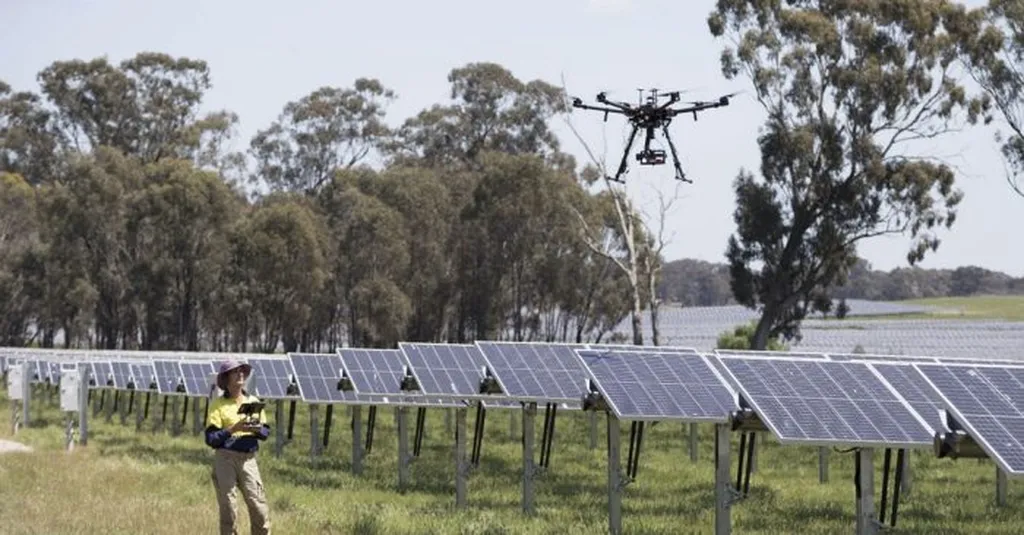In the rapidly evolving world of drone technology, researchers are tackling the challenges that stand between us and seamless last-mile delivery. Barry Feng, a researcher at the School of Electrical Engineering and Telecommunications at UNSW Sydney, has published a study in the journal “Sensors” (translated from the original title) that could significantly enhance the capabilities of quadcopters in delivery scenarios. The research focuses on load-swing attenuation in a quadcopter-payload system through trajectory optimization, a critical issue for the energy sector and beyond.
Feng’s work addresses a common problem in drone delivery: the instability caused by load-swing when a quadcopter picks up a payload. “The motion of the payload arm imposes a shift in the system’s centre of mass, leading to a possible instability,” Feng explains. To mitigate this, Feng proposes a non-linear control scheme that attenuates the residual energy from payload oscillation, ensuring smoother and more stable flights.
The study introduces a visual servoing implementation that leverages a CUDA-accelerated tag detection algorithm for real-time pose estimation of the target. This technology allows the quadcopter to accurately track and collect packages, even in dynamic environments. “The performance of the visual servoing approach is validated through both numerical simulations and a physical quadcopter implementation,” Feng notes, highlighting the practical applications of the research.
The implications for the energy sector are substantial. As drone technology becomes increasingly integral to last-mile delivery, the ability to efficiently and safely transport payloads over extended distances is crucial. Feng’s research could pave the way for more reliable and energy-efficient drone operations, reducing the need for ground-based transportation and lowering carbon emissions.
The study also explores the use of time-varying Linear Quadratic Regulator (LQR) techniques for trajectory optimization. This approach allows the quadcopter to adapt its flight path in real-time, further enhancing its stability and efficiency. “The load-swing attenuation through numerical simulations demonstrates the potential of this method to improve the overall performance of quadcopters in delivery scenarios,” Feng adds.
As the energy sector continues to seek innovative solutions for sustainable and efficient transportation, Feng’s research offers a promising avenue for exploration. By addressing the challenges of load-swing and trajectory optimization, this study could shape the future of drone technology, making it a more viable and eco-friendly option for last-mile delivery.
In a field where every ounce of efficiency counts, Feng’s work stands out as a beacon of progress. As the energy sector looks to the skies for solutions, the insights from this research could very well be the catalyst for the next generation of drone technology.

